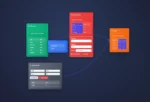In today’s rapidly transforming digital landscape, navigating regulatory compliance is no longer a matter of manual checklists and static reports. Businesses require dynamic, intuitive, and automated analytics solutions that not only streamline compliance efforts but also identify and mitigate risks proactively. Enter regulatory compliance dashboards—a sophisticated yet accessible blend of data engineering, actionable insights, and innovative risk assessment capabilities. Leveraging advanced data engineering consulting services can revolutionize the way your business approaches compliance. In this blog, we’ll demystify how technology-driven dashboards empower stakeholders with real-time, automated risk evaluations, ensuring more accurate, measurable, and agile compliance management.
Understanding the Importance of Regulatory Compliance Dashboards
In an environment increasingly governed by stringent regulations and rapidly changing industry standards, businesses need more than reactive methods to maintain compliance; they must adopt proactive strategies. Regulatory compliance dashboards play a key strategic role by pulling together large volumes of complex compliance data and translating it into meaningful, digestible insights. By employing strong data visualization techniques, these dashboards provide real-time overviews and actionable information that helps organizations quickly identify potential compliance threats or deviations.
Automating compliance assessments through these dashboards not only reduces the manpower traditionally required for manual reporting tasks but also significantly improves accuracy and accountability. Since data integrity is paramount in compliance, your business benefits immensely from timely error detection and corrected measures offered by automated monitoring. Enterprises that leverage dashboards for compliance tracking gain a distinct competitive advantage by efficiently focusing their strategic resources on growth rather than administrative oversight.
Moreover, stakeholders can customize dashboards to show critical KPIs aligned with their specific business objectives, compliance regulations, and risk management strategies. By effectively visualizing compliance risks, businesses can swiftly address potential issues, thus significantly reducing compliance costs, financial risks associated with regulatory infractions, and reputational damage.
The Role of Real-Time Data in Compliance and Risk Assessment
When it comes to compliance and risk management, timing matters. Businesses that rely on outdated data or periodic manual assessments expose their organization to considerable vulnerabilities. This is where the importance of streaming data and real-time analytics shines through. Incorporating technologies adept at handling large volumes of data quickly, such as outlined in our previous blog on handling streaming data at scale, becomes imperative to maintain regulatory adherence effectively.
Real-time compliance dashboards provide up-to-the-minute perspectives on your organization’s compliance status and relevant risks, empowering you to respond proactively, rather than reactively, to emerging issues. With instantaneous risk feedback, these dashboards allow your teams to implement mitigation actions before minor inefficiencies escalate into significant compliance breaches.
Also, leveraging advanced data processing techniques, such as those described in our post on processing window strategies for streaming analytics, becomes crucial in compliance scenarios. These analytic advancements enable organizations to pinpoint exactly when and where a compliance event or risk originated, thus enhancing transparency and clarity throughout regulatory processes and audits. As a result, real-time data transforms compliance strategies from static afterthoughts into live operational components that optimize organizational growth instead of hindering it.
Enhancing Efficiency with Automation and Risk Scoring
Automation within compliance dashboards isn’t merely about reducing manual effort. It’s about embedding systematic processes in identifying anomalies, predicting potential breaches, and assigning risk scores to proactively prioritize interventions. Automating compliance validation and risk scoring achieves scalability, accuracy, and transparency—key drivers of operational excellence. Companies can leverage advanced analytic frameworks, such as the techniques discussed in our article impact analysis automation for data pipeline changes, to ensure smooth incorporation of adjustments and enhancements in their dashboards.
With automated assessments, businesses benefit from consistent risk evaluation methodologies. Misalignment or subjectivity present in manual evaluations are significantly reduced, making risk assessments more dependable and transparent for regulatory stakeholders. Further, by employing predictive modeling and automated scoring metrics, your IT and compliance teams can shift from firefighting unexpected compliance issues to actively preventing potential breaches, saving considerable resources in the long term.
Utilizing intelligent pattern recognition and machine learning methodologies further enhances the risk scoring process. The integration of technologies such as those detailed in our article about machine learning pipeline design for production enables organizations not only to automate risk flagging but also refine predictions continually through the feedback loop generated by real-time assessments. This results in a self-optimizing compliance system, continually adapting and improving, reducing costs, and enhancing compliance accuracy across the enterprise.
Lightweight Models and Knowledge Distillation for Scalable Dashboards
To successfully manage compliance across large or distributed organizations, scalability and performance become critical elements. As dashboards grow, so too do the data processing requirements. Adopting streamlined approaches like those featured in our previous piece on knowledge distillation techniques for lightweight dashboard models becomes essential.
Through knowledge distillation, complex machine learning models and algorithms can be compressed into simplified yet effective analytics solutions for your compliance dashboards. Lightweight, distilled models improve dashboard responsiveness, reduce processing time, and enhance accessibility even on limited resources environments. Regardless if it’s executives accessing high-level compliance summaries or dedicated compliance teams drilling deeply into granular reports, a distilled analytical method ensures quick and intuitive access to critical insights and recommended actions.
The benefits extend beyond faster visualizations and analytics. Implementing lightweight dashboard models also reduces backend operational costs associated with computational resources, infrastructure, and energy, making regulatory compliance monitoring itself more sustainable and cost-effective. Strategic reliance on streamlined analytics solutions supports optimal decision-making capability at scale and enables rapid deployment or changes to reflect shifting regulatory requirements and risk realities.
Addressing Data Integrity: Identifying and Managing Orphaned Compliance Data
A common pitfall in compliance analytics revolves around orphaned or unused data—data assets that become disconnected or improperly maintained, potentially compromising the accuracy of compliance analyses. Identifying and managing orphaned data is therefore vital, and can pose significant challenges if not handled strategically.
Leveraging insights shared in our orphaned data detection and management framework article ensures your analytics team maintains a robust data integrity pipeline. Dashboards equipped with automated detection algorithms pinpoint orphaned data swiftly, providing transparent visibility into what’s causing incomplete or inconsistent data feeds in your compliance analyses. Through these automated controls, regulatory compliance dashboards become self-monitoring tools, proactively tracking not just enterprise risks but the integrity and validity of data underlying critical regulatory reports.
Fostering transparency, these automated systems alert stakeholders immediately when orphaned data conditions arise, creating actionable tasks to address the issue strategically before regulatory compliance assessments are compromised. Consequently, organizations maintain higher trustworthiness and accuracy in compliance reporting—improving overall system reliability and regulatory audit readiness.
Implementing Regulatory Compliance Dashboards: Best Practices and Strategic Value
Successful implementation of automated regulatory compliance dashboards goes beyond choosing technology. A strategic approach must encompass clear alignment of business objectives, collaboration with data engineering experts, and adoption of industry best practices. Effective implementation sees compliance dashboards not merely as reporting tools, but as strategic enablers for growth, innovation, and competitive advantage.
Stakeholder involvement becomes critical in defining user-centric dashboards that genuinely add value within daily operational workflows. Regular iterative refinement processes, including addressing changing regulatory standards and enhancing risk assessment methodologies, keep your compliance solutions dynamic and relevant. Engaging specialized expertise, such as the insights gained from data engineering consulting in Austin, Texas, ensures your dashboards adhere to industry-leading practices and leverage cutting-edge advancements in data analytics.
Your compliance dashboards also evolve as performance-enhancing tools—potentially driving entire analytics innovations within your organization. Demonstrating a proactive and transparent approach towards regulatory compliance earns trust not only among regulators but customers, partners, and investors. Embracing automated, meaningful, and insightful dashboard-centric compliance assessments positions your business as an agile, responsible, and innovation-focused player in your sector.
Implementing sophisticated, automated regulatory compliance dashboards is not merely about risk mitigation; it’s about strategically positioning your company for sustainable success and unlocking innovation at scale.
Thank you for your support, follow DEV3LOPCOM, LLC on LinkedIn and YouTube.

























